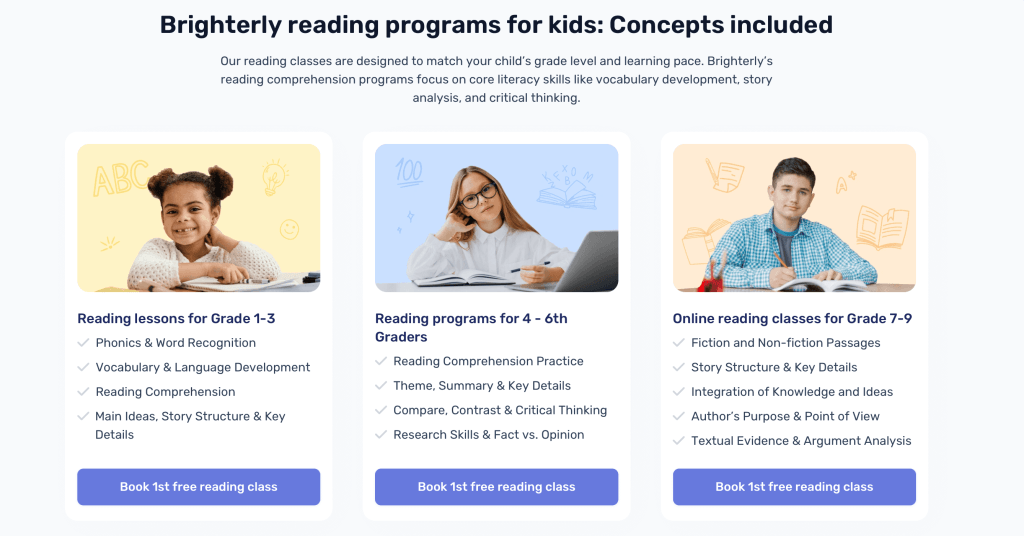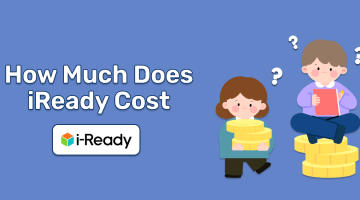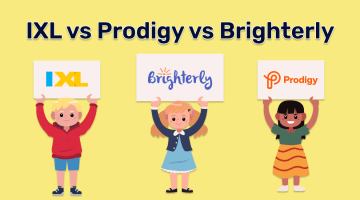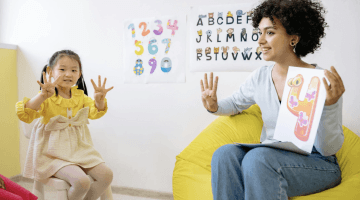Writing IEP Goals: Examples and Strategies
reviewed by Franz Jerby Delos Santos
Updated on September 15, 2025
About 1 in 7 students in U.S. public schools has an Individualized Education Program (IEP), which can be of much help if used correctly. Otherwise, students continue to struggle with organizing their ideas, grammar, clarity, and logical expression in text. Drawing from my experience as a teacher, I’ve compiled this article to explain the main points about a writing goal in an IEP.
Key Points:
- Special education IEP goal writing helps kids improve skills from grammar to organizing ideas.
- Goals should be specific, measurable, and unique, tailored to each child’s needs.
- Both short-term and long-term writing targets are important for steady progress.
- Strategies like breaking tasks into steps, regular practice, and clear feedback make learning easier.
- Parents’ support and guidance greatly increase success.
- Quality tutoring is one of the most effective tools in managing IEP goals, and platforms like Brighterly are the top choice to receive expert help.
What are the writing IEP goals?
Writing goals and objectives for IEP are specific target sets for a child, outlining skills they should develop in writing, like spelling, grammar, organizing thoughts, sentence structure, or short essays.
It’s important to understand that these goals aren’t a step-by-step program with all tasks and strategies – they’re simply a list of short-term and long-term (i.e., annual goal) targets. For example:
- Short-term goal (a few lessons): The student will write 1-2 sentences using correct capitalization and punctuation.
- Long-term goal (year): By the end of the year, the student will produce texts of 6-8 sentences on various topics, logically organizing ideas, using proper grammar, and expressing thoughts clearly.
These IEP goals for writing are essential because they serve as a roadmap for teachers, tutors, or parents to select the right assignments, creating an individualized path often bound by consecutive steps. This way, they can support steady progress in writing.
Note: Writing goals are set by a team of teachers and specialists, using data on your child’s strengths, challenges, and overall functioning. Parents can contribute their insights to make the goals more individualized and meaningful.
What is the formula for writing IEP goals?
The formula for writing goals for IEP is based on a clear, trackable structure called the SMART approach, which helps teachers create practical writing goals for students. It stands for the following features: specific, measurable, achievable, relevant, and time-bound.
Now, let me explain each one in more detail:
- Specific: tailored to the student’s strengths, challenges, and writing needs.
- Measurable: progress tracked via assignments, short tasks, and observations.
- Achievable: realistic for the child’s current skill level.
- Relevant: focuses on skills like sentence structure, grammar, idea organization, or behavior during writing.
- Time-bound: spans a school year or a set number of special lessons.
What are examples of IEP goals for writing?
Writing IEP goals can focus on building clear sentences, using correct grammar, organizing ideas into short paragraphs, and writing for longer periods of time. These targets help kids grow step by step and feel more confident as writers.
Here are some writing IEP goal examples to guide you. The table below shows the main skill areas, sample goals, and practice tips that support each one. This way, it’s easy to see how children can make steady progress in writing.
Skill |
IEP writing goals examples |
What it means |
Editing and correcting |
Edit writing to use transitional words and phrases to connect ideas (e.g., therefore, on the other hand) | – Here, the student practices using simple linking words smoothly within sentences and paragraphs. |
IEP goal for writing a paragraph |
Write paragraphs containing a stated main idea and a closing sentence | – This goal helps the kid organize their ideas and write a clear beginning and ending. |
IEP goal for writing: Structure |
Organize writing with an introduction, body, and conclusion using logical order | – The child practices creating texts that are easy to follow and understand. |
Research and сoncept |
Research and write to convey understanding of a topic using two or more resources | – In this case, the student collects information and explains it clearly in writing. |
Written expression IEP goals |
Write creative stories using descriptive language and complete sentences | – Regarding this one, the student develops self-expression and creativity while keeping writing clear |
How tutor-guided learning can help with your IEP goals?
As shown in the writing IEP goals sample above, having a program alone isn’t enough – a child often needs a supportive mentor at every step to implement it effectively. Unfortunately, many parents lack the time to create tasks or consistently monitor learning, and that’s where guided tutoring becomes invaluable.
That’s why I warmly recommend the Brighterly math and reading platform, which works with children in grades 1-9. Its reading program aims to strengthen writing, speaking, listening, and language skills, making learning truly holistic. Since one skill reinforces another, children who struggle with reading often face challenges in writing, too. Check out this video to get acquainted with Brighterly.
But what makes Brighterly lessons stand out from other similar programs?
- First of all, they are held one-on-one, with just a professional tutor and your child present, guaranteeing full focus on their progress.
- Second, a program fully adapted to each kid’s needs.
- Finally, Brighterly reading tutors are certified and highly experienced, skilled at working with writing goals for IEP and tailoring lessons to each student’s needs.
Below is a table showing how the Brighterly program helps children make progress in reading.
Skill |
How Brighterly helps |
IEP goals for writing simple sentences: Editing and correcting |
Brighterly’s program includes plenty of exercises for spotting and correcting mistakes in writing. This sharpens attention to detail and helps students build clear, simple sentences with greater accuracy. |
Working with paragraphs |
Mentors take the time to help children carefully analyze each paragraph, identify the main ideas, and later express them clearly. They often use activities like the best reading worksheets for kids to give extra practice and structure. Parents can also use these free worksheets at home to help kids achieve confidence outside the classroom. |
Writing goal for IEP: Structure |
Children learn to put their ideas in a clear order. To teach this, Brighterly uses guided tasks and examples to show how to build well-structured writing. |
Research and concept recognition |
As part of their reading program, children work with texts and complete various tasks to understand the content and find the correct answers. |
IEP goals for written expression |
In one-on-one sessions with a professional tutor, children practice expressing their thoughts both orally and in writing. Interactive exercises and creative tasks also help nurture their imagination. |
Note: Brighterly tracks your child’s progress, letting you check their achievements anytime. Parents get regular progress reports to stay on track, while students receive constant feedback that keeps them motivated and improving.
IEP writing goals for 1st grade – 5th grade (elementary)
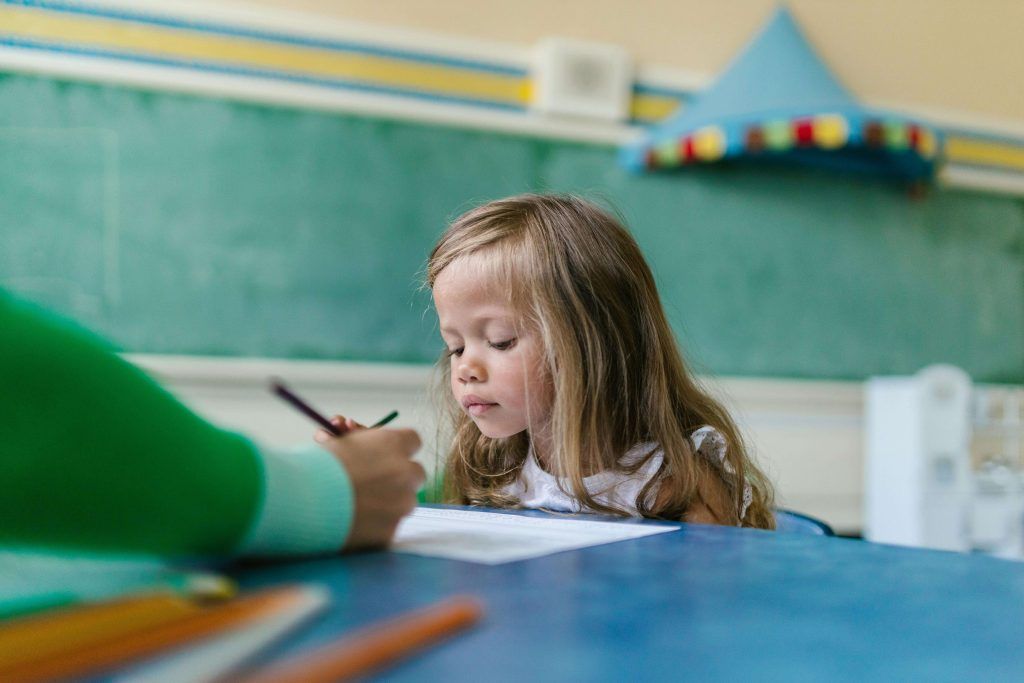
Let’s start by looking at what children in elementary school should be able to do. Writing IEP goals for 1st grade focus on the most basic standards. So, it’s great if a child can:
- Write individual words and simple sentences
- Recognize where a sentence begins and ends
- Use capital letters at the beginning of sentences and simple punctuation correctly
- Create short notes about themselves, their family, or everyday events
- Start noticing and correcting mistakes with help from a teacher or tutor
By grades 2-5, children are ready to work with longer texts and more complex sentences. That’s why the writing goals IEP at this stage will likely include:
- Combining sentences into paragraphs
- Developing logical flow of ideas
- Improving spelling and punctuation
- Using simple stylistic techniques
- Practicing writing for group communication (social skills)
6th grade – 8th grade IEP writing goals (middle school)

In middle school, writing IEP goals guide children to organize their ideas into clear paragraphs while improving grammar and punctuation. Kids are also encouraged to practice different written forms, which build stronger and more general writing skills step by step. At this stage, they should learn how to write organized paragraphs, use transitions for flow, strengthen grammar and punctuation, and practice short essays, letters, or summaries.
I would say that the focus shifts to building more general writing skills that prepare them for high school, while encouraging creativity and clear expression of ideas.
High school IEP writing goals: Supporting student growth
When it comes to high school, writing IEP goals focus on preparing teens for bigger academic and life challenges. At this stage, students learn to collect ideas and information from reliable sources, organize their thoughts, and turn them into clear essays or research papers. They also practice sharing their writing with various members of their community: teachers, classmates, and even future employers. So they can communicate with confidence. These skills make a real difference as they move toward graduation and the next steps in life.
Writing IEP goals examples
To give you a clear picture of how writing goals grow with each grade, I’ve put together a table with real writing IEP goals examples.
Grade |
Writing IEP goals examples |
1st grade |
The student should write simple sentences using capital letters, spaces, and periods correctly. |
2nd-5th grade(Elementary school) |
When given a picture prompt, the student should be able to write a descriptive paragraph with at least four sentences, using appropriate adjectives and adverbs, with 75% accuracy in 3 out of 4 trials. |
6th-8th grade (Middle school) |
The student should be able to write a persuasive essay with a clear thesis statement and supporting arguments by the end of the semester. |
9th-12th grade (High school) |
Students must know how to independently revise multi-paragraph essays for grammar, punctuation, style, and coherence, integrating feedback, and be able to embed at least one credible external source. |
Strategies for achieving IEP goal writing

Helping your child achieve their IEP goal writing can seem challenging at first, but simple executive strategies really make a difference. By monitoring progress and keeping a collection of their written work, you can easily see how much they are improving. With steady support, writing can become enjoyable and build confidence. Here are a few strategies from me, as a teacher, to help your child succeed.
Create a daily routine for achieving a writing goal
I always suggest short, regular writing sessions of about 10-20 minutes lasting for many days. It helps children get comfortable expressing their thoughts in writing. For example, you can start with a journal, letters to friends, or short stories.
Break tasks into small steps
Instead of expecting a long essay right away, focus first on short sentences and paragraphs, gradually increasing complexity. This approach reduces stress and makes progress visible.
Use models and examples
I recommend showing children examples of well-written sentences or paragraphs and reviewing them together. It helps them understand structure, logical flow, and basic grammar rules.
Provide support in changing and revising the IEP writing goal
Work together with your child to spot and correct mistakes step by step – first grammar, then punctuation, then style. If you don’t have the time to monitor every detail, a tutor is a great option. A professional reading or writing teacher can guide your child, track progress, and ensure the IEP writing goals are met.
Use positive reinforcement
Praise your child! When they make specific achievements, highlight them: “You used capital letters correctly!” or “Your paragraph is very clear!” It will boost their confidence and motivate them to keep writing.
Conclusion
Ultimately, I’d like to emphasize that the key to achieving an IEP writing goal is consistency, regular practice, and a focus on both progress and challenges. With these rules in mind, children build skills, confidence, and independence in their written work.
Programs like Brighterly make this process stress-free and enjoyable. Their lessons are playful yet structured, perfect for both young learners and high school students. Certified teachers ensure effective guidance and personalized tasks, helping each child develop the right form and approach in their writing. If you’re interested, you can book free reading lesson and see whether this tutoring fits your child’s needs.


